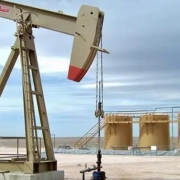⚠️ IMPORTANT LEGAL DISCLAIMER:
The information provided on this page is for general informational purposes only and does not constitute legal, financial, or investment advice. Oil and gas laws, mineral rights regulations, and royalty structures vary significantly by state and jurisdiction. While we strive to provide accurate and up-to-date information, no guarantee is made to that effect, and laws may have changed since publication.
You should consult with a licensed attorney specializing in oil and gas law in your jurisdiction, a qualified financial advisor, or other appropriate professionals before making any decisions based on this material. Neither the author nor the publisher assumes any liability for actions taken in reliance upon the information contained herein.
Oil and gas royalty negotiations are a critical aspect of the energy industry, shaping the financial landscape for both landowners and extraction companies. These negotiations determine the compensation that landowners, mineral rights holders, and other stakeholders receive in exchange for allowing companies to extract valuable natural resources from their land. A successful oil and gas royalty negotiation ensures that both parties derive fair value, while also establishing a framework for long-term cooperation and sustainability.
This article explores several case studies of successful oil and gas royalty negotiations. Each case provides insights into the key factors that contribute to positive outcomes, from understanding market dynamics to balancing financial, legal, and environmental considerations. By examining these cases, landowners, investors, and companies can glean valuable lessons to apply in their own negotiations.
The Fundamentals of Oil and Gas Royalty Negotiations
Before diving into specific case studies, it’s important to understand the fundamentals of oil and gas royalty negotiations. Royalties are payments made by extraction companies to landowners or mineral rights holders, typically expressed as a percentage of the revenue generated from the sale of extracted resources. The amount of royalties depends on several factors, including the quality of the resources, market prices, production rates, and the terms of the agreement.
Oil and gas royalty negotiations involve balancing several competing interests. Landowners seek to maximize the financial return from their resources, while extraction companies aim to secure favorable terms that allow them to operate profitably. In addition to financial considerations, other factors such as environmental stewardship, legal compliance, and community impact often play a role in negotiations.
Negotiating for Long-Term Value in North Dakota
One of the most well-known success stories in oil and gas royalty negotiations occurred in North Dakota’s Bakken Shale, a region that has experienced a boom in oil production due to advancements in hydraulic fracturing and horizontal drilling. This region became a focal point for oil companies and landowners seeking to capitalize on vast shale oil reserves.
In North Dakota, a group of savvy landowners formed a coalition to negotiate collectively with oil companies. By pooling their resources and hiring experienced legal and financial advisors, these landowners were able to leverage their position to secure more favorable royalty agreements than they might have individually.
Instead of accepting the initial offers presented by the oil companies, the coalition took the time to research market conditions, analyze production forecasts, and consult with experts in oil and gas law. Their efforts paid off when they successfully negotiated royalty rates that were above the regional average, ensuring that they received a higher percentage of the revenue from the extracted oil.
In addition to securing favorable financial terms, the coalition also focused on environmental protections and community impact. They included clauses in their agreements that required the oil companies to adhere to strict environmental standards, minimizing the potential for pollution and damage to local ecosystems. These negotiations proved successful in the long term, as the landowners not only received higher royalties but also preserved the value and integrity of their land.
Preserving Cultural Heritage in Indigenous Territories
The successful negotiation of oil and gas royalties is not just about securing financial returns—it can also be a matter of protecting cultural heritage and preserving Indigenous sovereignty. A prime example of this can be found in negotiations between Indigenous communities and oil companies in Canada’s oil sands region.
Indigenous communities, whose lands sit atop some of the largest oil reserves in the world, have historically been marginalized in resource extraction discussions. However, in recent years, many of these communities have asserted their rights to control the development of natural resources on their lands. By invoking principles of free, prior, and informed consent, they have been able to negotiate royalty agreements that respect their cultural values while ensuring economic benefits.
In one notable case, an Indigenous nation in Alberta negotiated a comprehensive royalty agreement with a major oil company. The community emphasized the need for a partnership that would respect their land, traditions, and governance structures. Through careful negotiation, they secured royalty rates that exceeded industry norms, but also incorporated key provisions for environmental stewardship and cultural preservation.
For instance, the agreement included clauses requiring the oil company to conduct ongoing environmental monitoring and to employ community members in leadership positions within the project. The community also gained a share of the project’s profits, allowing them to reinvest in local infrastructure, education, and health services. The result was a holistic agreement that balanced economic development with cultural and environmental sustainability.
Maximizing Royalties through Data-Driven Royalty Negotiations
In a world increasingly driven by data, one Texas landowner successfully used data analytics to enhance their negotiating position in an oil and gas royalty negotiation. The landowner’s property sat on top of a promising shale formation, and multiple oil companies had expressed interest in leasing the mineral rights.
Instead of rushing into an agreement, the landowner took a data-driven approach. They hired a team of geologists, engineers, and financial analysts to conduct a thorough analysis of the property’s resource potential. The team used advanced geological modeling, production forecasts, and market analysis to determine the true value of the resources beneath the land.
Armed with this data, the landowner was able to approach the negotiations from a position of strength. They had a clear understanding of the potential production rates, market prices, and long-term value of the resources, which allowed them to negotiate royalty rates that reflected the property’s full economic potential. Additionally, the landowner included performance-based royalty clauses in the agreement, ensuring that the royalty rate would increase if production exceeded certain thresholds.
By leveraging data analytics, the landowner was able to negotiate a deal that not only provided a higher upfront payment but also included royalty rates that adjusted over time based on actual production levels. This approach resulted in a more lucrative and sustainable royalty agreement, maximizing the long-term financial returns from the property.
Protecting Environmental Interests in Coastal Regions
Oil and gas production in coastal regions often involves significant environmental risks, particularly in areas that are sensitive to ecological changes. One coastal landowner in Louisiana, whose land was adjacent to a vital wetland ecosystem, faced a challenging negotiation when an oil company sought to drill for natural gas on the property.
The landowner was deeply concerned about the potential impact that drilling could have on the local ecosystem, particularly the wetland areas that served as a habitat for numerous species of wildlife. Rather than rejecting the deal outright, the landowner decided to engage in a negotiation that would prioritize both financial and environmental concerns.
With the help of environmental experts and legal counsel, the landowner negotiated a royalty agreement that included stringent environmental protections. The agreement required the oil company to use advanced drilling techniques that minimized disruption to the land and water. Additionally, the company was required to restore any land or water areas that were disturbed during drilling activities.
The landowner also negotiated a higher-than-average royalty rate, recognizing the potential environmental risks involved and the unique value of the property. The final agreement struck a balance between the financial interests of the landowner and the environmental protection of the coastal region, demonstrating that oil and gas royalty negotiations can successfully address both economic and ecological concerns.
International Oil and Gas Negotiations in Africa
In Africa, where many countries are rich in oil and gas reserves, royalty negotiations between governments and international oil companies can be particularly complex. These negotiations often involve balancing the interests of the government, which seeks to maximize revenue for national development, with the interests of international companies that want to secure profitable extraction rights.
In one notable case, the government of an African nation successfully negotiated a landmark royalty agreement with a major international oil company. The country, which had recently discovered significant offshore oil reserves, was eager to capitalize on its resources while avoiding the pitfalls of resource dependency and environmental degradation.
The government took a strategic approach to the negotiations, assembling a team of experienced negotiators, legal experts, and economists. They conducted a thorough analysis of global oil markets, production costs, and the potential economic impact of the deal. This data-driven approach enabled the government to secure a royalty rate that was significantly higher than previous agreements in the region.
Moreover, the government negotiated additional terms that ensured long-term benefits for the country. These included provisions for technology transfer, local employment, and infrastructure development. The agreement also included environmental safeguards, requiring the oil company to adhere to international environmental standards and to invest in renewable energy projects as part of its corporate social responsibility initiatives.
The successful negotiation resulted in a win-win situation: the government secured substantial royalties to fund national development projects, while the oil company gained access to a valuable resource in a stable political environment. This case highlights the importance of preparation, expertise, and strategic thinking in international oil and gas royalty negotiations.
Navigating Complex Legal Royalty Negotiations Frameworks in Australia
Australia’s oil and gas industry operates within a complex legal framework that includes federal, state, and Indigenous land rights laws. In one case, a landowner in Western Australia successfully navigated these legal complexities. It is to secure a favorable royalty agreement with a major gas company.
The landowner’s property was located in a region that was subject to both state mineral rights laws. Moreover subject to Indigenous land rights claims. There was no attempt to negotiate a deal independently. The landowner was working closely with legal experts who specialized in Australian resource law and Indigenous rights.
The legal team helped the landowner navigate the overlapping jurisdictions. It is to ensure that the royalty agreement complies with all relevant laws. They also facilitated negotiations with local Indigenous communities. This ensured that the deal respected their rights and included provisions for shared benefits.
Through careful legal navigation and collaboration with Indigenous stakeholders, the landowner was able to secure a royalty agreement. It provided fair compensation for the extraction of natural gas while minimizing the risk of legal disputes. The agreement also included provisions for environmental protection and community investment. This ensured that the benefits of the deal were distributed equitably.
Case Studies
These case studies highlight the diverse factors that contribute to successful oil and gas royalty negotiations. From leveraging data and expertise to balancing financial, environmental, and cultural interests. Whether dealing with private landowners, Indigenous communities, or governments, the key to success lies in preparation, strategic thinking, and a willingness to engage in collaborative negotiations.
For landowners and stakeholders involved in oil and gas royalty negotiations, these examples provide valuable lessons on how to maximize returns while ensuring that agreements are fair, sustainable, and respectful of all parties involved. By learning from these success stories, stakeholders can approach their negotiations with greater confidence and a clearer understanding of the potential opportunities and challenges they may face.
Do you have further questions related to Royalty Negotiations? Feel free to reach out to us here.











